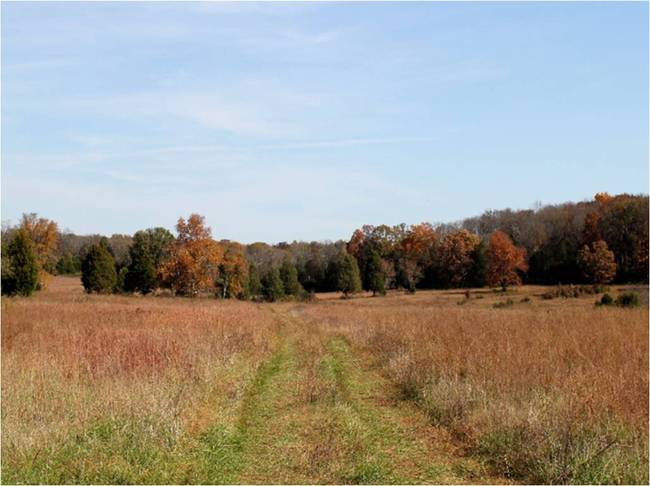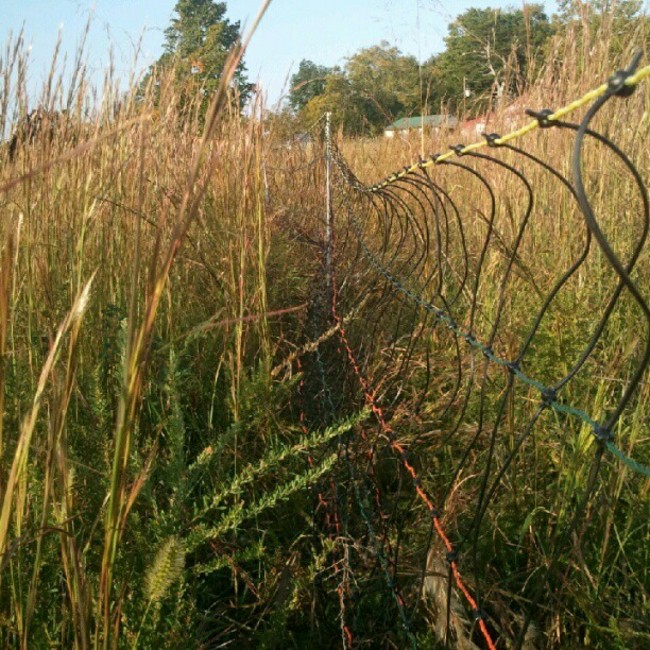Broomsedge is listed as a "Noxious Weed" on the USDA website. It's a sign of low fertility and it's one of the most invasive weeds around. We have a ton of it on our farm. Several tons, actually. On our first visit to the farm last October we didn't even know what Broomsedge was. Looking out onto the fields we saw the image below:
I don't know what this pasture looks like to the average untrained eye, but to my untrained eye it looked great. "Tall grass, something a goat would probably eat, fantastic." That was my initial reaction, I loved it.
Over the next few months I discovered that the reddish/orage hue of our 4 ft tall fields were the result of broomsedge: A noxious and invasive weed that is a sign of low fertility. Not so great afterall.
Whether you've recognized it or not, Broomsedge makes appearances in our photos all the time. In fact, here's the last three photos I posted on Facebook, all highlighting the Broomsedge:


